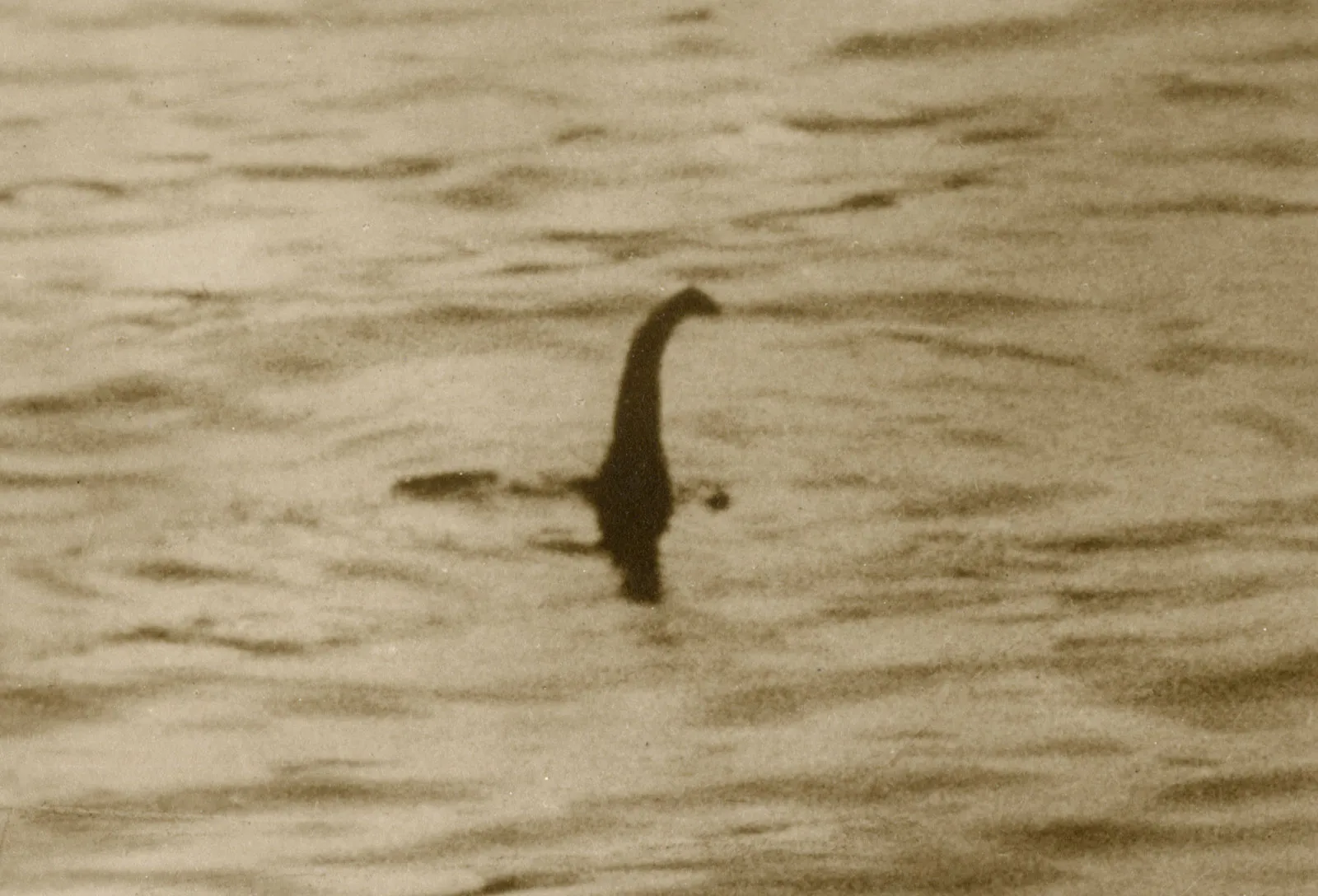
Photograph that allegedly showed the Loch Ness monster, 1934. The image, known as the “surgeon’s photograph,” was later revealed to be a hoax.
© Historica/REX/Shutterstock.com

Posted in Critters
On April 3, 1860, the first Pony Express mail, traveling by horse and rider relay teams, simultaneously leaves St. Joseph, Missouri, and Sacramento, California. Ten days later, on April 13, the westbound rider and mail packet completed the approximately 1,800-mile journey and arrived in Sacramento, beating the eastbound packet’s arrival in St. Joseph by two days and setting a new standard for speedy mail delivery. Although ultimately short-lived and unprofitable, the Pony Express captivated America’s imagination and helped win federal aid for a more economical overland postal system. It also contributed to the economy of the towns on its route and served the mail-service needs of the American West in the days before the telegraph or an efficient transcontinental railroad.
The Pony Express debuted at a time before radios and telephones, when California, which achieved statehood in 1850, was still largely cut off from the eastern part of the country. Letters sent from New York to the West Coast traveled by ship, which typically took at least a month, or by stagecoach on the recently established Butterfield Express overland route, which could take from three weeks to many months to arrive. Compared to the snail’s pace of the existing delivery methods, the Pony Express’ average delivery time of 10 days seemed like lightning speed.
The Pony Express Company, the brainchild of William H. Russell, William Bradford Waddell and Alexander Majors, owners of a freight business, was set up over 150 relay stations along a pioneer trail across the present-day states of Missouri, Kansas, Nebraska, Wyoming, Colorado, Utah, Nevada and California. Riders, who were paid approximately per week and carried loads estimated at up to 20 pounds of mail, were changed every 75 to 100 miles, with horses switched out every 10 to 15 miles. Among the riders was the legendary frontiersman and showman William “Buffalo Bill” Cody (1846-1917), who reportedly signed on with the Pony Express at age 14. The company’s riders set their fastest time with Lincoln’s inaugural address, which was delivered in just less than eight days.
The initial cost of Pony Express delivery was for every half-ounce of mail. The company began as a private enterprise and its owners hoped to gain a profitable delivery contract from the U.S. government, but that never happened. With the advent of the first transcontinental telegraph line in October 1861, the Pony Express ceased operations. However, the legend of the lone Pony Express rider galloping across the Old West frontier to deliver the mail lives on today
Posted in Critters
Residents Phil and Jane Carter spotted a rare two-legged fox foraging for food in their Ilkeston, Derbyshire, England garden on December 17, 2022. The nimble vulpine had no trouble getting around the garden and certainly could easily run away, sprinting upright.
Read more over on Boing Boing.
Posted in Because I Can, Critters
Posted in Because I Can, Critters, Humor, The Little Screen (Television)
Per the website Wild Snakes Education and Discussion, the ages old rhyme should be taken with a grain of salt.
The rhyme goes “Red touches black, venom lack. Red touches yellow, kill a fellow”. There are a few other variation of this rhyme, but the idea behind it is to identify these snakes by the color of their banding. Several species of non-venomous snake in the U.S. have alternating red, black, and yellow banding and have historically caused confusion.
Here are the four “controversies”:
The first controversy is that sometimes (rarely) a snake will be found that does not look like the field guide photo. These snakes are called “aberrant” and they often have markings and colors that are different – sometimes extremely different – from the “normal” version of the species.
The second controversy is the existence of a snake native to the southwestern U.S., the Shovel-nosed Snakes (Chionactis sp.) These small, harmless snakes do have red and yellow bands touching, which may cause confusion and could result in these snakes being killed.
The third controversy is that the rhyme is often misquoted and mixed up which could cause someone to mistake a coralsnake for a non-venomous species.
The fourth, most dangerous, and 100% accurate argument is that the rhyme is only reliable when in reference to coralsnakes native to the United States. Once we enter Mexico and down through South America, we encounter dozens of coralsnake species which do not follow any rules or rhymes. To add to the confusion there are also dozens of coralsnake “mimics” in Central and South America and Mexico. These range from non-venomous species to rear-fanged and venomous species.
Go, now, read the whole article… it just might save your life. Link
Posted in Because I Can, Critters